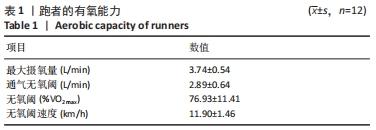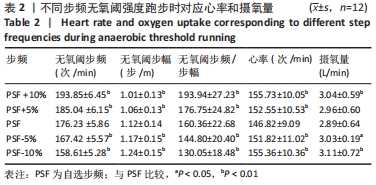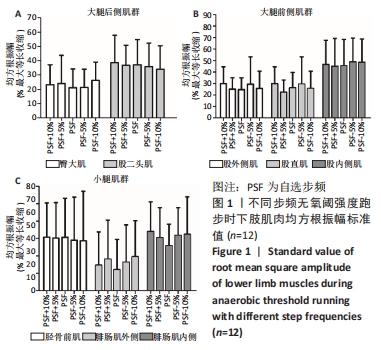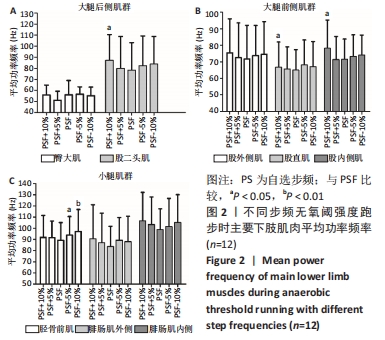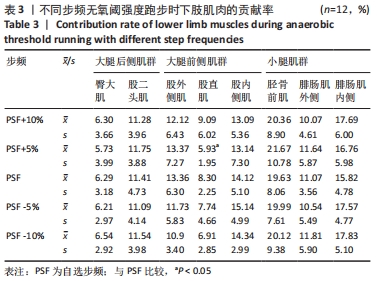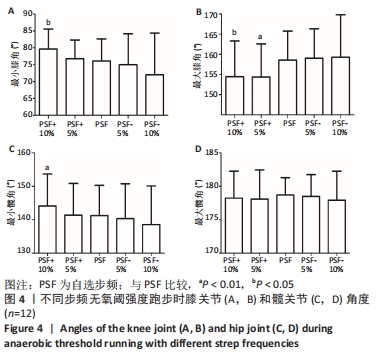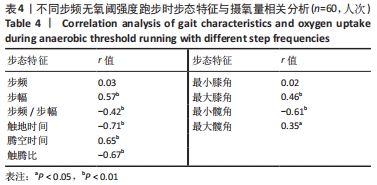[1] DE RUITER CJ, VERDIJK PWL, WERKER W, et al. Stride frequency in relation to oxygen consumption in experienced and novice runners. Eur J Sport Sci. 2014; 14(3):251-258.
[2] HOBARA H,SATO T,SAKAGUCHI M,et al. Step frequency and lower extremity loading during running. Int J Sports Med. 2012;33(4):310-313.
[3] HAFER JF, BROWN AM, DEMILLE P, et al. The effect of a cadence retraining protocol on running biomechanics and efficiency: a pilot study. J Sports Sci. 2015; 33(7):724-731.
[4] EDWARDS WB, TAYLOR DT. Effects of stride length and running mileage on a probabilistic stress fracture model. Med Sci Sports Exerc. 2009; 41(12):2177-2184.
[5] DEWOLF A, JAEGER DD. Effect of stride length on maximal pelvic tilt and hip extension during running. Comput Methods Biomech Biomed Engin. 2015;18 Suppl 1:1926-1927.
[6] THOMPSON MA,GUTMANN A,SEEGMILLER J,et al. The effect of stride length on the dynamics of barefoot and shod running. J Biomech. 2014; 47(11):2745-2750.
[7] CHUMANOV ES,WILLE CM,MICHALSKI MP,et al. Changes in muscle activation patterns when running step rate is increased. Gait Posture. 2012;36(2):231-235.
[8] HELD NJ, MACLEAN CL, WARBURTON DE. Biomechanical Alterations during Aquatic Treadmill Running. Health Fitness J Canada. 2018;11(4):66-79.
[9] 祁钰杰,王琳.跑步再训练对髌股疼痛综合征跑者髌股关节压力的影响[J].浙江体育科学,2021,43(2):105-112.
[10] 王俊清,张希妮,罗震,等.步频再训练对跑步时下肢冲击的生物力学影响研究[J].应用力学学报,2020,37(5):2167-2175+2331-2332.
[11] LENHART RL, THELEN DG, WILLE CM, et al. Increasing running step rate reduces patellofemoral joint forces. Med Sci Sports Exerc. 2014; 46(3):557-564.
[12] ALLEN DJ, HEISLER H, MOONEY J, et al. The effect of step rate manipulation on foot strike pattern of long distance runners. Int J Sports Phys Ther. 2016;11(1):54-63.
[13] Santos-Concejero J, Oliván J, Maté-Muñoz JL, et al. Gait-cycle characteristics and running economy in elite Eritrean and European runners. Int J Sports Physiol Perform. 2015;10(3):381-387.
[14] Barnes KR, Mcguigan MR, Kilding AE. Lower-Body Determinants of Running Economy in Male and Female Distance Runners. J Strength Cond Res. 2014;28(5):1289-1297.
[15] 裴杰,杨建昌.无氧阈测定方法的研究进展[J].首都体育学院学报, 2006, 18(6):68-70.
[16] FALLA D, DALL’ALBAA P, RAINOLDI A, et al. Location of innervation zones of sternocleidomastoid and scalene muscles-a basis for clinical and research electromyography applications. Clin Neurophysiol. 2002; 113(1):57-63.
[17] GEORGE SM,KARL BL,ADAM RB, et al. Do foot orthoses change lower limb muscle activity in people with flat-arched feet towards a pattern observed in those with normal-arched feet?.Clin Biomech (Bristol, Avon). 2010;25(7):728-736.
[18] 刘瑞东,洪扬,陈小平.稳定与多级非稳定条件下徒手与负重深蹲的肌电特征研究及其对当前力量训练的启示[J].体育科学,2015,35(8):45-51.
[19] DONATH L, KURZ E, ROTH R, et al. Different ankle muscle coordination patterns and co-activation during quiet stance between young adults and seniors do not change after a bout of high intensity training. BMC geriatrics. 2015;15(1): 1-8.
[20] MORGAN DW, BRANSFORD DR, COSTILL DL, et al. Variation in the aerobic demand of running among trained and untrained subjects. Med Sci Sports Exerc. 1995;27(3):404-409.
[21] HUNTER I, SMITH GA. Preferred and optimal stride frequency, stiffness and economy: changes with fatigue during a 1-h high-intensity run. Eur J Appl Physiol. 2007;100(6):653-661.
[22] LUCA D, CARLO J. Use of the surface EMG signal for performance evaluation of back muscles. Muscle Nerve.1993;16(2):210.
[23] GERDLE B, KARLSSON S, CRENSHAW AG, et al. The relationships between EMG and muscle morphology throughout sustained static knee extension at two submaximal force levels. Acta Physiologica Scandinavica. 2010;160(4):341-351.
[24] KRISTEV I, KOSSEV A. Muscle fatigue assessment during sustained high isometric contractions. Acta Physiol Pharmacol Bulg. 2001;26(1-2):29-32.
[25] 陆阿明,王国栋,王芳. 运动性疲劳对跑运动学与下肢肌电的影响[J]. 体育科学,2012,32(6):44-49,80.
[26] MASUMOTO K, JOERGER J, MERCER JA. Influence of stride frequency manipulation on muscle activity during running with body weight support. Gait Posture. 2018;61:473-478.
[27] 张美珍,曲峰.跑台和地面上跑动时的生物力学分析[J].北京体育大学学报, 2011,34(11):55-57+61.
[28] SANTOS-CONCEJERO J, TAM N, GRANADOS C, et al. Stride Angle as a Novel Indicator of Running Economy in Well-Trained Runners.J Strength Cond Res. 2014; 28(7):1889-1895.
[29] 刘智鑫.中长跑技术特征与运动能耗相关性实验分析[J].湖北体育科技, 2018,37(1):28-32.
[30] Heise G, Shinohara M, Binks L. Biarticular leg muscles and links to running economy.Int J Sports Med. 2008;29(8):688-691.
[31] Neal BS, Barton CJ, Aleksandra B, et al. The effects & mechanisms of increasing running step rate: A feasibility study in a mixed-sex group of runners with patellofemoral pain. Phys Ther Sport. 2018;32:244-251.
[32] Heiderscheit BC, Chumanov ES, Michalski MP, et al. Effects of step rate manipulation on joint mechanics during running. Med Sci Sports Exerc. 2011; 43(2):296-302.
[33] 王俊清,张希妮,罗震,等. 步频和步长的改变对下肢生物力学的影响研究进展[J].中国运动医学杂志,2020,39(2):138-144.
[34] Dickinson MH, Farley CT, Full RJ, et al. How animals move: an integrative view. Science. 2000;288(5463):100-106.
[35] Morin JB, Samozino P, Zameziati K, et al. Effects of altered stride frequency and contact time on leg-spring behavior in human running. J Biomech. 2007; 40(15):3341-3348.
[36] Farley CT, González O. Leg stiffness and stride frequency in human running. J Biomech. 1996;29(2):181-186.
[37] Giandolini M, Arnal PJ, Millet GY, et al. Impact reduction during running: efficiency of simple acute interventions in recreational runners. Eur J Appl Physiol. 2013;113(3):599-609.
|

